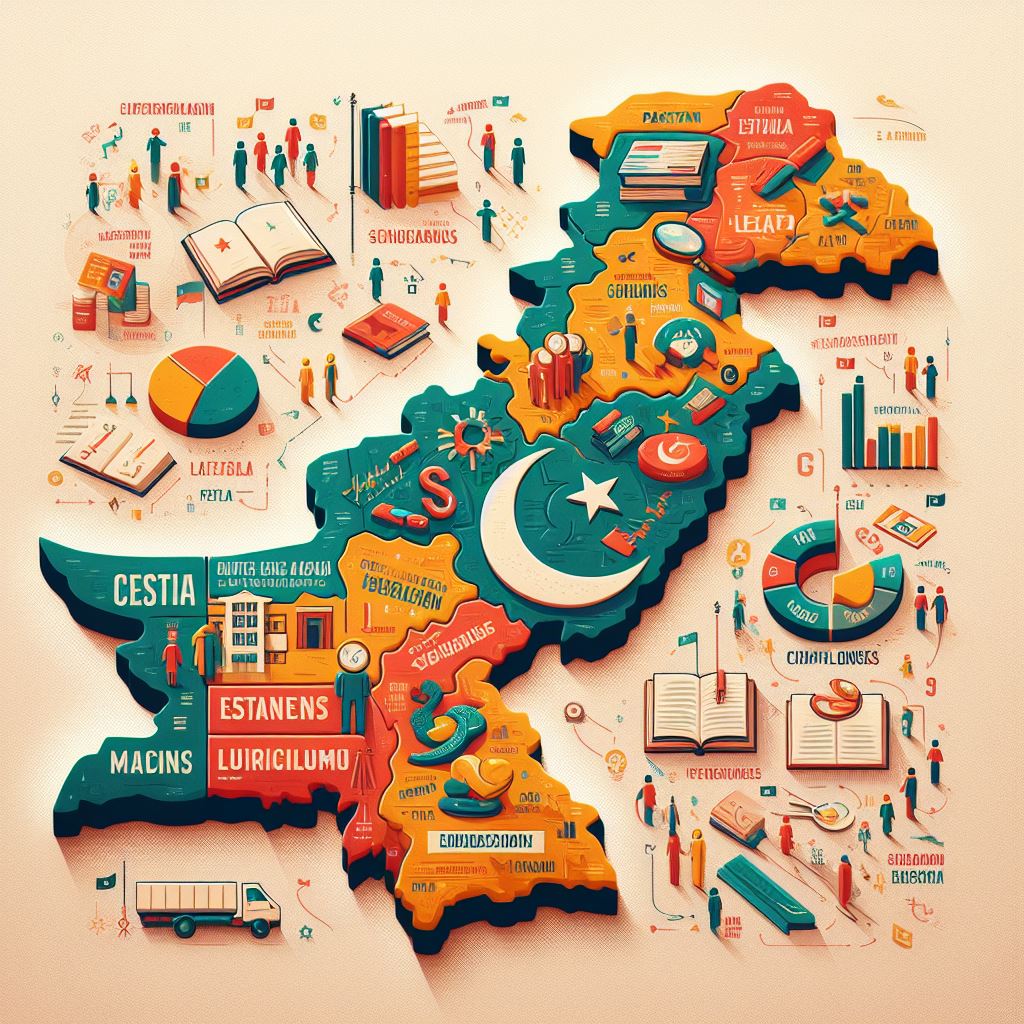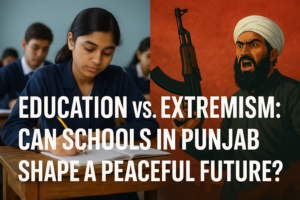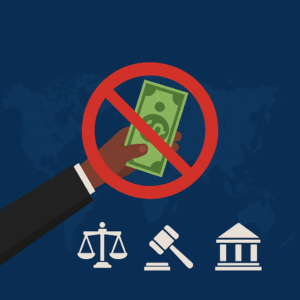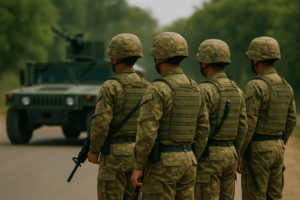Introduction
The literacy rate of a nation is not merely a statistic but a pivotal indicator of its prosperity and future trajectory. In the tapestry of national development, education serves as the loom upon which the fabric of progress is woven. A robust educational framework, characterized by excellence and attentiveness to student welfare, emerges as the cornerstone of societal advancement.
The correlation between education and national advancement is undeniable. As the minds of the populace are sharpened through learning, the collective potential of the nation is unlocked, propelling it towards greater heights. A populace endowed with knowledge and critical thinking skills becomes the engine driving innovation, economic growth, and social cohesion.
Indeed, the significance of education extends beyond the confines of economic prosperity. It is the fulcrum upon which the future balance of a nation rests. By nurturing the intellects of its youth, a nation invests in its own continuity and resilience. The cultivation of well-rounded individuals, equipped not only with academic prowess but also with moral compasses and empathy, ensures the sustenance of societal values and the preservation of cultural heritage.
Moreover, an advanced education system transcends the mere transmission of knowledge; it is a catalyst for societal transformation. By instilling a thirst for learning and a spirit of inquiry, it empowers individuals to challenge the status quo, effect positive change, and contribute meaningfully to the collective good.
In essence, the imperative for a nation to cultivate a sophisticated education system cannot be overstated. It is a beacon of hope, illuminating the path towards progress and prosperity. As we recognize that children are not only the future but also the architects of tomorrow’s world, investing in their education becomes not only a duty but a sacred obligation—one that holds the key to unlocking the boundless potential of nations and shaping a brighter future for all.
Education System of Pakistan:
Education has remained a paramount focus for the government of Pakistan. In 2014, the Pakistan 2025 Vision was launched as a national strategic plan, with the top two of its 25 goals dedicated to the education sector. By 2025, the plan aims to achieve a 100 percent enrollment and graduation rate for primary school students, along with a 90 percent literacy rate. Additionally, it seeks to raise higher education enrollment from 7 percent to 12 percent and increase the number of Ph.D. scholars from 7,000 to 15,000.
To support these ambitious goals, the government has allocated approximately two percent of the total National Public Sector Development Program in the federal budget to education-related initiatives. In the fiscal year 2023-24, this allocation amounted to PKR 97 billion (approximately $320 million), with PKR 76.5 billion (approximately $260 million) designated for Tertiary Education Affairs and Services, and PKR 59.7 billion (approximately $200 million) allocated to the Higher Education Commission.
Furthermore, the government has launched a multi-tiered program aimed at enhancing Science, Technology, Engineering, Arts, and Mathematics (STEAM) education for students nationwide.
In the past year, Pakistan has introduced the Single National Curriculum (SNC) for grades 1-5, although its implementation is pending. The SNC aims to provide equal educational opportunities to all students, regardless of whether they attend public or private schools. Derived from the concept of “One Nation, One Curriculum,” the SNC also aims to cater to the needs of minorities by allowing them to study their respective religions, including Christianity, Hinduism, Sikhism, Baha’i, and Kalasha faiths, during grades 1-5. However, its successful implementation requires a comprehensive consultation process involving various stakeholders from different education sectors.
Institutional Structure
Pakistan boasts more than 200 universities and 3,000 degree colleges nationwide. Its national education system encompasses four levels spanning twelve years of schooling: primary (grades 1-5), middle school (grades 6-8), matriculation (grades 9 and 10), and intermediate (grades 11 and 12).
Pakistan’s educational landscape comprises approximately 182,600 functional primary schools, 46,800 middle schools, 34,800 secondary schools, 7,648 higher/secondary/intermediate colleges, and 3,729 technical and vocational institutes. Additionally, the country boasts over 200 universities and 3,000 degree colleges spread nationwide.
According to the government’s 2021-23 Pakistan Economic Survey, the educational landscape included approximately 11.35 million students in pre-primary education, 25 million in primary education (grades 1-5), around 8.75 million in middle education (grades 6-8), 4.5 million in secondary education (grades 9-10), and 2.5 million in higher-secondary education (grades 11-12). The survey also noted approximately 455,000 students enrolled in technical and vocational education, roughly 820,000 in degree-awarding colleges, and 1.96 million students in universities during the 2021-22 academic year.
Degree Collages:
Degree colleges in Pakistan operate similarly to community colleges, offering four-year educational programs in various disciplines. There are approximately 3,000 degree colleges across the country.
On the other hand, Pakistan is home to 202 universities in both the public and private sectors, all accredited by the Higher Education Commission (HEC). The HEC, established constitutionally, operates autonomously to fund, oversee, and accredit universities. These institutions offer a wide range of disciplines, covering almost all major fields of study.
Skill Development:
The Government of Pakistan has set up several skill development councils, including the Skill Development Technical Council, Skill Development Council Lahore, Skill Development Council Karachi, and Skill Development Council Peshawar. These councils operate under the National Training Board through public-private partnerships. Their associated training institutes provide a range of regular and corporate training programs across various domains.
Technical & Vocational Education and Training (TVET):
Pakistan’s Technical and Vocational Education and Training (TVET) system is overseen by the National Vocational and Technical Training Commission (NAVTTC), which is responsible for developing and implementing policies, strategies, and regulations. At the provincial level, entities similar to NAVTTC include the Punjab Vocational Training Council (PVTC), Punjab Technical Education & Vocational Training Authority (PTEVTA), Sindh Technical Education and Vocational Training Authority (STEVTA), Khyber Pakhtunkhwa Technical Education and Vocational Training Authority (KPTEVTA), and Baluchistan Technical and Vocational Training Authority (BTEVTA).
These organizations offer a wide range of courses covering various subjects. Additionally, several private organizations also provide TVET-based programs, contributing to the overall skill development landscape in Pakistan.
Incubation Centers:
The HEC mandates Higher Education Institutes (HEIs) to establish Offices of Research, Innovation, and Commercialization (ORICs), leading to the creation of Business Incubation Centers (BICs).
Government-initiated national incubation centers and provincial initiatives like Plan 9 in Punjab and Durshal in Khyber Pakhtunkhwa aim to bridge academia-industry gaps and foster innovation and entrepreneurship.
Role of Higher Education Commission
In 2020, the Higher Education Commission (HEC) of Pakistan implemented a policy, inspired by initiatives from Pakistani Higher Education Institutes (HEIs), encouraging Pakistani schools to establish international campuses. This move aims to elevate their status while allowing HEIs to offer their educational programs to the global market.
Additionally, the HEC’s Travel Grant Program provides funding opportunities for Pakistani researchers and scholars. Through this program, the HEC directly reimburses schools that host participants accepted into their study or research programs, both domestically and internationally.
To address the historical neglect of the Technical and Vocational Education and Training (TVET) sector, the Ministry of Federal Education & Professional Training introduced a national “Skills for All” strategy in 2021. This strategy is tailored to meet the needs of unskilled and economically disadvantaged segments of the population, enabling their participation in the economy.
There has been a notable rise in the number of Pakistani students pursuing education abroad. In January 2020, Pakistan initiated a policy titled “Pakistani HEIs Offering Degree Programs in Collaboration with Foreign Universities”. This policy aims to foster cross-border education opportunities and foster collaboration between Pakistani and international institutions. It includes various elements and opportunities for participants and partner institutions, such as the conferral of a single degree by a foreign partner university to participants completing studies in their home country.
Furthermore, in 2019, the HEC introduced a Faculty Exchange Program to enhance teaching and research collaboration between Pakistani institutions and faculty members from international partner institutions.
Problems in the Education System of Pakistan
Insufficient Focus on Primary Education:
A fundamental challenge plaguing Pakistan’s education system is the lack of adherence to government-set policies by educational institutions. Many schools neglect the critical primary level, failing to recognize its pivotal role in laying the groundwork for students’ academic journey.
Overemphasis on Higher Education Burdens:
The relentless pursuit of profit drives institutions to prioritize higher education, inundating students with overwhelming information. This focus on rote learning for exam success perpetuates a grade-obsession culture, eclipsing the pursuit of knowledge and holistic development.
Financial Barriers to Education:
Private institutions, driven by financial gain, impose exorbitant fees, rendering higher education inaccessible to the majority. Meanwhile, government institutions witness soaring merit requirements, favoring grades over aptitude and passion for learning. This economic disparity undermines educational equity and demands urgent government intervention.
Fragmented Educational Landscape:
Instead of fostering unity, Pakistan’s education system perpetuates divisions through disparate educational categories. Cambridge schools, catering to international syllabi, are financially out of reach for many. Although teaching the Pakistani curriculum in English, English medium schools also come with a hefty price tag. Madrassahs, while providing religious education, neglect holistic learning. Government institutions teaching in Urdu risk diluting Pakistan’s identity.
Government Intervention for Unity:
The government must prioritize Urdu-medium education in public schools to promote national cohesion. This ensures linguistic unity and preserves Pakistan’s cultural identity. Addressing these categorical divisions is imperative to eliminate barriers and bridge the perceived educational gap between government and private institutions.
Read Also: Let Us Change Ourselves Before We Change The System
Ways to Improve the Educational System of Pakistan
The pivotal role of education in shaping the destiny of nations cannot be overstated, particularly in the context of Pakistan’s multifaceted challenges. It is imperative that we, as a nation, prioritize the education of our children above all else, transcending political discord for the collective betterment of our society. Here, I delineate a comprehensive strategy to overhaul Pakistan’s education system and pave the path for national resurgence.
A Unified Curriculum:
Uniformity in the curriculum across all educational institutions, regardless of their public or private status, is paramount. This standardized approach ensures equal access to quality education for all children, fostering a level playing field and nurturing a generation equipped for future success. Stringent government oversight is essential to enforce compliance with the prescribed curriculum across the educational spectrum.
Dynamic Syllabus Development:
To remain abreast of rapid advancements, particularly in the realm of science and technology, periodic updates to the syllabus are imperative. A dynamic curriculum that reflects contemporary knowledge and innovations ensures students have relevant skills and competencies to thrive in a rapidly evolving global landscape.
Empowering Educators:
The recruitment and training of educators must prioritize academic qualifications, pedagogical understanding, and communication skills. Teachers play a pivotal role in simplifying complex concepts and igniting a passion for learning in their students. Reducing class sizes to facilitate personalized attention is essential, mitigating the burden on teachers and enhancing the quality of education imparted.
Primary Education Primacy:
Investment in primary education is foundational to the holistic development of children, shaping their intellectual faculties and character formation. Emphasizing foundational skills enhances academic proficiency and fosters confidence and resilience in young learners, laying a sturdy groundwork for future academic pursuits.
Affordable Access:
Addressing financial barriers to education is paramount to ensuring equitable access for all segments of society. Lowering fees across the educational spectrum, coupled with initiatives to provide free primary education, alleviates the financial burden on parents and widens access to education. Scholarships should be readily available to deserving students, irrespective of their economic background, thereby democratizing access to education.
Inclusive Learning Environment:
Promoting education without discrimination is essential for fostering a diverse and inclusive society. Raising awareness about the importance of education, particularly in marginalized communities, breaks down societal barriers and empowers individuals to pursue learning irrespective of gender, ethnicity, or socioeconomic status.
In the eloquent words of Nelson Mandela, “Education is the most powerful weapon which you can use to change the world.” By embracing these transformative measures, Pakistan can harness the formidable power of education to catalyze social progress and economic prosperity.
Furthermore, beyond academic excellence, holistic development encompasses extracurricular activities such as sports, which are pivotal in nurturing well-rounded individuals. Initiatives like sports competitions in schools, such as those facilitated by Mukabbir Schools, contribute significantly to students’ growth and development, instilling values of teamwork, discipline, and resilience alongside academic pursuits.
Conclusion
In conclusion, Pakistan’s education system faces multifaceted challenges that impede its ability to fulfill its crucial role in shaping the nation’s future. The hurdles are numerous and complex, from the neglect of primary education to the profit-driven focus on higher learning, the economic barriers that limit access to education, and the fragmentation that divides students based on educational categories.
However, amidst these challenges lies an opportunity for transformation. By prioritizing primary education, shifting the focus towards genuine learning over rote memorization, addressing financial disparities, and fostering unity in educational provision, Pakistan can pave the way for a brighter future.
Policymakers, educators, and society must work toward a more equitable, inclusive, and effective education system. Only through collective effort and commitment can Pakistan unlock the full potential of its youth, empower future generations, and chart a course toward sustainable development and national prosperity.
Read Also:
- A Critical Analysis Of Education System of Pakistan
- A Comparison of Education System; China vs Pakistan
- Higher Education in Pakistan Ills and Remedies
📍 SEO & Content Strategist | Expert in Current Affairs, History, Geography & Education Blogs | Digital Marketing Specialist
Muhammad Talha Mehmood is a seasoned digital marketing specialist, SEO expert, and content strategist with over six years of experience in creating high-impact, research-driven content. As the driving force behind Globaleak.com, he delivers in-depth articles on current affairs, history, geography, and education, helping readers stay informed with accurate, well-researched insights.
🔹 Expertise & Achievements:
✔ SEO & Content Strategy: Specializes in creating authoritative, high-ranking content that aligns with Google’s EEAT guidelines.
✔ Research & Analysis: Covers historical events, geopolitical trends, and educational topics with in-depth research and expert insights.
✔ Proven Track Record: Has successfully worked with global clients, delivering content that enhances brand trust, audience engagement, and search rankings.
✔ Academic Excellence: Holds an MBA in Marketing from IBA, University of the Punjab, and a B.Com (Hons) from Hailey College of Commerce.
✔ Industry Experience: Started his career with Packages Limited, trained under PITB’s E-Rozgar Program, and later became a Team Leader & Trainer at Emenac Group of Companies.
🚀 Passionate about creating impactful content, Muhammad Talha ensures every article is insightful, engaging, and value-driven.
📧 Email: talhamehmood34@gmail.com
🔗 LinkedIn: linkedin.com/in/talhamehmood-34










